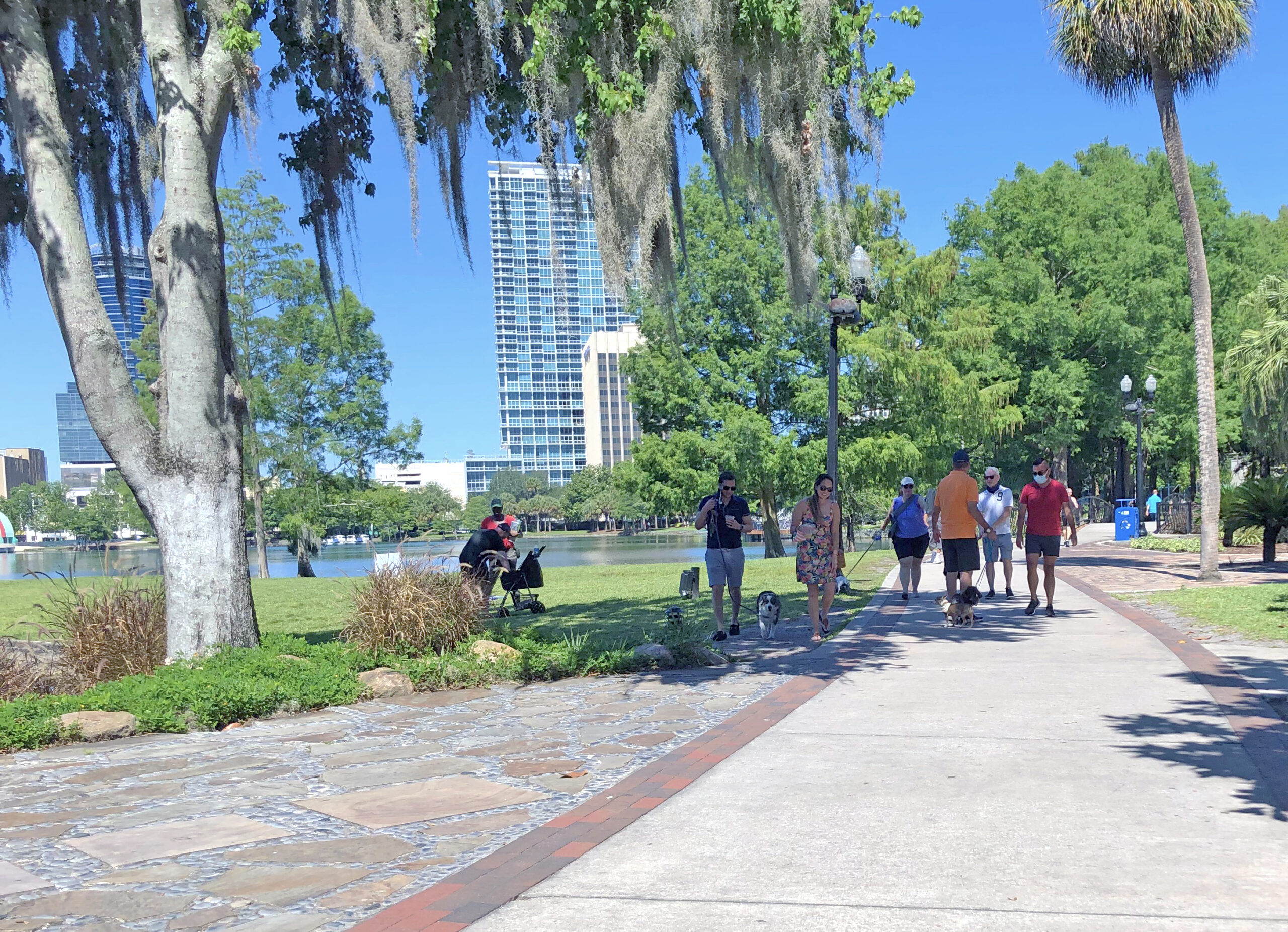
On a typical Sunday, my small family, comprised of my wife and nearly two-year-old daughter, make our way out the front door of our home, through a maze of sidewalks, and eventually to Lake Eola in downtown Orlando. We make a casual lap around the lake, take in the late morning sun, pause for passing geese, and eventually make a stop at the tot-lot before finally making our journey back home. Along the walk home we almost always cut through Dickson Azalea Park – a lush and beautiful greenway that follows Fern Creek and slices through the urban fabric of East Orlando. Along the greenway, there are a handful of well-placed benches, nestled in the crook of a narrow lawn beneath the sprawling branches of a few magnificent Live Oaks, overlooking the Palmetto covered streambank. I look forward to stopping at those benches from the onset of our Sunday walks. Despite the stroll around Lake Eola and giggle-filled bounding about in the tot-lot, it’s the moment we sit at our bench that I’m most eager to reach. Small, but memorable moments happen from that wood slatted bench. The holding of hands, the babbling and stringing together of first sentences, innocent laughter, and perhaps, one day soon, the first lesson in tying shoes.
Many of life’s special moments happen in the space between our front door and the places we go.

Prior to the worldwide spread of COVID-19, I was steadily working on a piece that builds the case for intentional, well sequenced small-scale placemaking within community design. The idea of fine-grained opportunities for respite, quiet reflection, or more intimate social engagement that can exist between the front door of our homes and the ultimate destination of a park, public amenity, corner diner, or main street. A cousin of tactical urbanism, I suppose, but with more permanence. “Spaces in between” are unapologetically simple and understated. It’s the introduction of something as simple as a single bench and a comforting canopy tree along a modest, but frequently traveled, neighborhood pathway that eventually leads to a park or prime destination. The complexity is in the analysis and acute detail of positioning these spaces in the right locations for usership.

Amidst the current public health challenges, it has been noticed by many that public space has become a rediscovered social asset. Parks are overflowing with use by all demographics. During a time that feels relatively dystopian, our parks and open space systems are providing a much-needed reset and recharge to offset the daily blur of a nearly sequestered life. As a designer and park lover, I have joined the ranks of many in arm-chair considerations of how our parkland could and should adapt following the lessons learned during the pandemic to better prepare us for future events. While there are certainly things I’d tweak and tinker with in our approach to park planning, I’d also like to take a step back. Rather than thinking of ways to provide for social distancing during what is most likely a short lived spike in heightened daily use of our parks, I want to consider pulling at the threads of our core open spaces to extend those assets throughout the pathways that lead us to them. This thought brought me back, full circle, to the “spaces in between” concept.
To go on a minor, but relevant tangent, years ago while in university I studied zoo exhibit design and the placement, frequency, and sequencing of those exhibits along the pathways of a zoo master plan. I discovered that none of it was by chance and it was all part of “museum science.” In a nutshell, in addition to primary exhibits, be it the fanatic inspiring lions, bears, penguins, or polar bears, there is an intentional and well-placed hierarchical sequence of smaller exhibits in between. The smaller exhibits break up the masses and deliver just enough interest and time occupancy to visitors as to not overwhelm the lion’s den, or some other show stopping exhibit. Brainwave: museum science can work in parks system planning as well.
To wrap it up, within the gap that separates our homes and the destination parks we visit, there are opportunities for relatively low-cost open space infrastructure. One answer to providing additional open space opportunities and reducing the daily burden of our top shelf park spaces is to spread the resources throughout the surrounding community. While it would be fantastic, I don’t mean build more parks, per se. Rather, provide or retrofit neighborhoods that have park-like qualities ingrained within their infrastructure.
